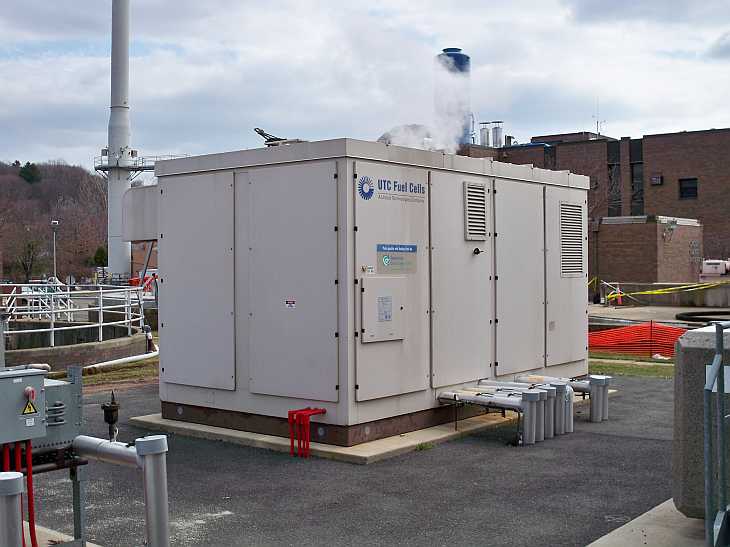Capitalizing on Fuel Cell’s Electric Power and Heat
The Greater New Haven Water Pollution Control Authority operates one of the largest processing facilities in the nation for disposing of fat, oil, and grease (FOG) collected from restaurants and other food-preparation facilities. The watery mixture is heated to remove 99 percent of the water, and the FOG is then used as a supplemental fuel in the GNHWPCA’s sludge incinerator.
With a peak demand of almost three mega-watts and an average monthly electric bill of $156,000, the GNHWPCA exerts a considerable load on the local electrical grid. The FOG system alone consumes over 100,000 kWh annually. To address these issues, the Authority installed a UTC PC25C phosphoric acid type fuel cell powered by natural gas. The fuel cell generates 200 kW of electrical power and 900,000 BTU per hour of heat, thereby providing the heat needed to process over 10,000 gallons of FOG every day and about 6 percent of our facility’s electrical power requirement.

The fuel cell’s heat output allows the center to increase the amount of FOG treated from 4,000 gallons per day to 10,000 gallons per day, representing a 250 percent increase in production and creating a significant revenue opportunity for the GNHWPCA. Excess thermal energy produced is used to augment the heating system in the adjacent maintenance building. Since the fuel cell power plant provides supplemental base-load electric power for the facility in parallel with the utility grid, the New England region will benefit from the removal of 200 kW of load from conventional fossil fuel generation.
Compared to the utility generation, the fuel cell will produce 40,000 pounds less of SOx and NOx emissions annually, which has a positive impact on the region’s air quality, as well as a 60 percent reduction in CO2 released in to the atmosphere.
Fuel Cell Creates Savings
The combined electric and thermal energy produced by the fuel cell will reduce electricity purchases by approximately 190,000 kWh per month, saving $16,000 in utility charges. This is partially offset by the consumption of natural gas, which will add about $9,700 per month.
To learn more information about Clean, Renewable Energy Sources please visit Connecticut’s Clean Energy’s Website

